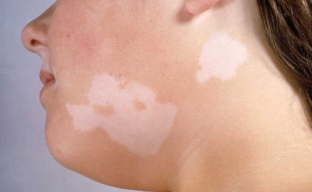Our skin – largest organ. It is subject to external and internal influences. The substance melanin, which is located in the epidermis, is responsible for its color. However, if the process of its production is disturbed, depigmentation of the skin may appear, emphasizes estet-portal.com.
This process can be generated by genes, or it can be manifested under the influence of external factors (for example, radiation). Lack of skin coloration (white spots on the skin) may be diffuse, complete or partial.
What is skin depigmentation and what are its symptoms
If, for some reason, melanocytes stop producing melanin, then the pigment that colors the skin disappears and white spots appear. If the amount of pigment is simply reduced, then this is – hypochromia, if it disappears completely – achromia. This may be due to the pathology of the body. Moreover, depigmentation can be:
- complete, when certain areas of the skin are completely "whitened";
- partial, when normal skin color alternates with white patches.
It can also be divided into:
- persistent;
- temporary.
With persistent depigmentation, skin color is not restored, while temporary depigmentation is treatable and depends on the degree of melanin loss by the epidermis.
An example of persistent depigmentation is vitiligo disease. With this disease, the skin pigment disappears only on some parts of the skin.
At the beginning of the disease, these spots are rather small in size, but gradually begin to increase their area of distribution. Most often, the areas of the skin that are in contact with the sun's rays are the first to suffer. Depigmented spots can appear on any part of the skin and head. If the hairline is in the area of \u200b\u200bwhite spots, it also becomes discolored. As a rule, this disease mostly affects women.
Also, depigmentation can be:
- congenital
- purchased.
The congenital type refers to changes in the skin of albinos. The complete absence of the enzyme tyrosine in their body leads to the destruction of melanin. Such people have very light skin of a pinkish hue. Their pupils are also devoid of pigmentation and are colored red. The hair is usually white or has a yellowish tint. Often with such a birth defect, strabismus and fear of light appear.
Read also: Correction of involution-dystrophic skin changes by laser resurfacing
Causes of skin depigmentation
As we found out, depigmentation occurs in the case of a decrease in the production or in the absence of a coloring skin pigment. She appears:
- In the case of hereditary factors (achromia), transmitted genetically (e.g. albinism).
- In the case of an acquired disease, such as vitiligo. Often it affects people who have impaired function of the endocrine glands or who have suffered severe emotional upheavals. Also, the manifestation of this type of depigmentation can be affected by autoimmune processes, chronic ailments.
- In case of secondary depigmentation, where the skin may lose its color due to diseases such as psoriasis.
- In case of past skin diseases: lichen, seborrheic dermatitis, streptoderma, etc. With such diseases, depigmentation is a temporary phenomenon. The skin can regain its original hue after complete healing.
- In case of mechanical damage to the skin (burns, injuries), partial depigmentation is also possible in the affected areas.
- In case of bleeding and iron deficiency in the body.

Skin depigmentation treatments
To get rid of skin depigmentation, it is necessary to establish the cause that caused it. Effective therapy can bring positive results.
However, in the case of vitiligo and albinism, only supportive procedures are possible, since a complete cure for these ailments is not possible. With these diseases, measures are taken to protect the skin from ultraviolet exposure to sunlight and symptomatic treatment.
In the treatment of vitiligo, the depigmentation process can be somewhat slowed down by using an iodine tincture in combination with clear doses of ultraviolet radiation. This procedure helps to partially restore the color of the skin. However, during the treatment of this disease, you need to know that it is associated with immune processes, and eliminate the disruption of the immune system.
When 80% of the body is affected by vitiligo disease, the skin cannot be restored.
Read also: Treatment of vitiligo with folk remedies: the most effective recipes
If depigmentation is associated with iron deficiency in the body, then the recovery period in this case may take 3 weeks. At the same time, iron-containing preparations and vitamins are prescribed, especially vitamin C.
The treatment of depigmentation is a complex and lengthy process, which can only be controlled by experienced professionals. If you notice such changes on your skin, seek help and do not wait for this unpleasant defect to spread.
Stay beautiful and healthy with estet-portal.com.






Add a comment